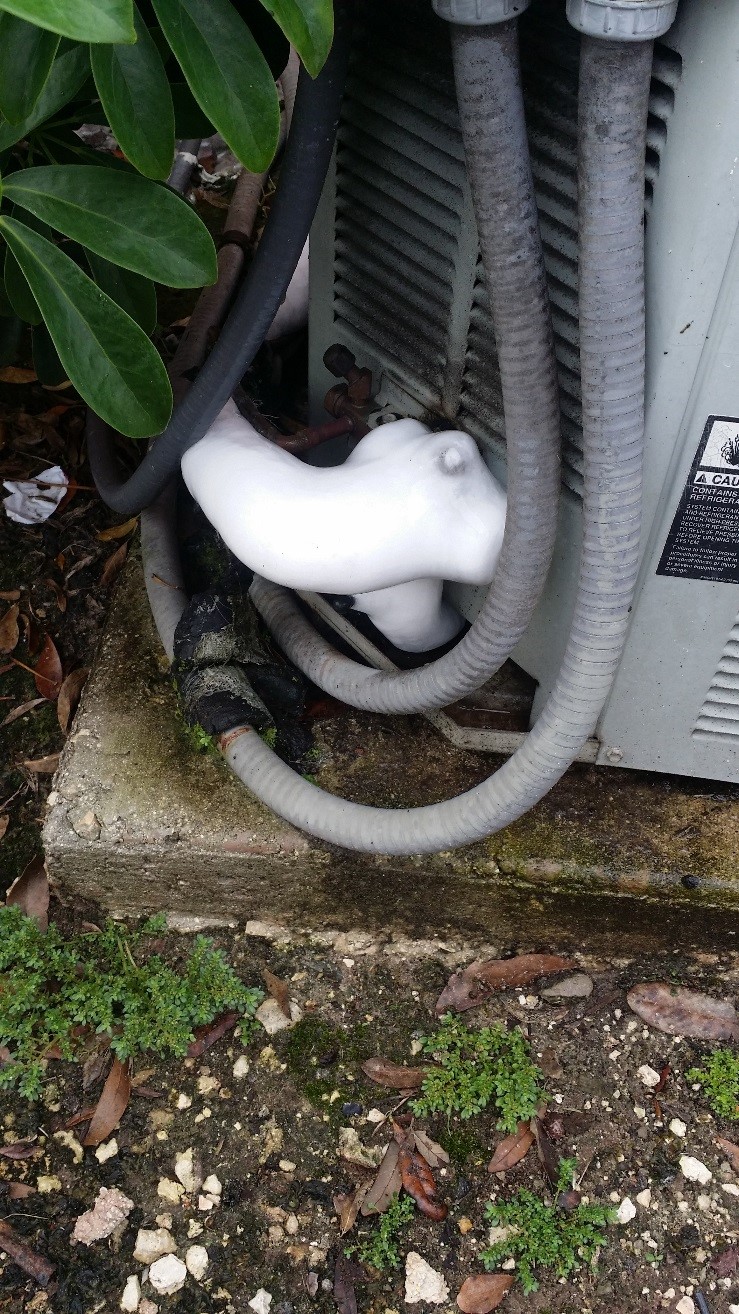How to Deal With a Frozen AC Pipe - Critical Measures for Recovery
How to Deal With a Frozen AC Pipe - Critical Measures for Recovery
Blog Article
We have noticed this article pertaining to What Causes AC Pipes To Freeze? directly below on the net and thought it made perfect sense to write about it with you on this site.

Intro
Finding that your air conditioning pipeline is iced up can be concerning, specifically throughout hot summertime when you count on your air conditioning unit one of the most. Understanding what to do in such a scenario is important to stop additional damage to your cooling system and guarantee your comfort indoors.
Comprehending the Causes
Several factors can add to the cold of an a/c pipeline. Understanding these causes can help you deal with the concern effectively.
Absence of Airflow
One common source of an icy a/c pipeline is inadequate airflow. When the airflow over the evaporator coil is restricted, it can cause the coil to go down below freezing temperature level, bring about ice development on the pipe.
Low Refrigerant Levels
Not enough cooling agent levels in your air conditioning system can also cause a frozen pipeline. Reduced refrigerant degrees can cause the stress in the system to drop, leading to the cold of moisture on the evaporator coil.
Winter Conditions
In colder climates, freezing temperature levels outside can contribute to the cold of air conditioning pipelines. If your AC device is not correctly protected or if there are leakages in the ductwork, chilly air can penetrate the system, causing the pipeline to ice up.
Dirty Air Filters
Filthy or blocked air filters can restrict air movement in your AC system, resulting in various concerns, consisting of a frozen pipe. It's necessary to change or clean your air filters regularly to ensure appropriate airflow and protect against ice accumulation.
Indicators of a Frozen A/c Pipe
Recognizing the indications of a frozen AC pipeline is critical for timely action.
Lowered Airflow
If you discover a significant reduction in airflow from your vents, it might show a frozen pipeline.
Ice Buildup on the Pipe
Noticeable ice buildup on the cooling agent line or the evaporator coil is a clear indication of a frozen a/c pipeline.
Strange Sounds from the Unit
Unusual noises, such as hissing or gurgling, originating from your AC unit can indicate that there's ice existing on the pipeline.
Immediate Actions to Take
When confronted with an icy a/c pipeline, it's vital to act promptly to avoid further damage to your cooling system.
Switching off the AC
The primary step is to switch off your air conditioning unit to avoid the system from running and aggravating the issue.
Looking for Blockages
Evaluate the area around the indoor device for any kind of blockages that might be blocking airflow, such as furnishings or curtains.
Defrosting the Pipe
You can make use of mild methods like positioning towels soaked in cozy water around the icy pipeline to aid thaw it gradually.
Preventive Measures
Taking safety nets can help prevent future events of a frozen a/c pipeline.
When DIY Methods Fail
If your efforts to thaw the pipe or address other problems are not successful, it's time to call in a professional.
Significance of Hiring a Professional HVAC Technician
A licensed HVAC service technician has the proficiency and tools necessary to diagnose and fix concerns with your air conditioner system securely and successfully.
Routine Maintenance Checks
Schedule normal upkeep talk to an expert HVAC technician to make certain that your a/c system is running efficiently.
Transforming Air Filters
Consistently replace or cleanse your air filters to stop airflow limitations and keep optimum performance.
Protecting Exposed Pipes
If your a/c pipes are revealed to cold temperature levels, consider insulating them to prevent cold throughout cold weather.
Seeking Professional Help
If DIY approaches fail to deal with the concern or if you're not sure regarding exactly how to proceed, it's ideal to seek aid from a qualified HVAC professional.
Verdict
Dealing with an icy air conditioner pipeline can be a discouraging experience, however knowing how to react can help minimize damages and restore convenience to your home. By comprehending the causes, identifying the indications, and taking prompt action, you can effectively resolve the issue and stop future occurrences.
Frozen AC Line: Why It Happens & What To Do About It
A frozen AC line can be a rather peculiar sight in a place like Phoenix, Arizona where nothing ever freezes. In this post, we’ll discuss what makes an air conditioner line frozen – and what you can do about it.
Dirty Air Filters
Did you know that you should be cleaning or replacing your air filters on a monthly basis? Failing to do this can result in airflow issues that, in turn, cause your evaporator coils and lines to freeze over. You’ll notice a buildup of ice on both components, although the buildup on your pipes will, of course, be more evident unless you open your air condition up to reveal the coils.
What To Do About It
Give your air filter a good cleaning if it’s reusable. If not, replace the filter outright. Next, switch your air conditioner’s fan setting on and leave it there for 2-3 hours. This will draw warm air in, helping to thaw your evaporator coil. You can also check out this article for some tips on cleaning the coils themselves if you’d like to speed the process up. Before you switch the unit back to its normal state, make sure the supply vents are completely unobstructed and free of dust or other debris.
If you keep having this issue even after replacing your filters regularly, contact a local HVAC repair company and have them inspect your evaporator coil, ductwork, and any other components that may be at fault. If you live in the Phoenix, Arizona area, give American Home Water and Air a call.
Low Refrigerant Levels/Leakage
What To Do About It
Contrary to what air conditioner “recharge” companies often tell their clients about refrigerant, it should never need to be simply refilled. You see, refrigerant runs in what experts refer to as a “closed loop.” Refrigerant really shouldn’t be leaving that loop. If it is, you’ve got a leak.
Paying someone to come and pump more refrigerant into your system (aka “recharge” it) isn’t the solution. Doing that will simply kick the can down the road. Besides, refrigerant leaks can be harmful to the environment and people in your home.
Rather, you need to take care of the leak with the help of a technician. Check out this article for some more information about dealing with air conditioners that are leaking refrigerant. Before you contact a technician, switch your thermostat to the off position. Then, switch the fan setting on and let it run for 2-3 hours so the unit can thaw.
Improper Temperature Setting
Improper temperature settings can also cause a drop in your air conditioner’s pressure. What many people don’t realize is that air conditioners are actually designed to run when temperatures have fallen above roughly 60 degrees Fahrenheit. If you run the unit when it’s cold outside, you’ll run into many issues, including frozen components.

Hopefully you enjoyed reading our section on What Do I Do If My AC Pipe Is Frozen. Thanks a ton for taking time to read our posting. Feel free to set aside a second to distribute this blog if you enjoyed reading it. Bless you for your time. Don't forget to stop by our site back soon.
Click Here Report this page